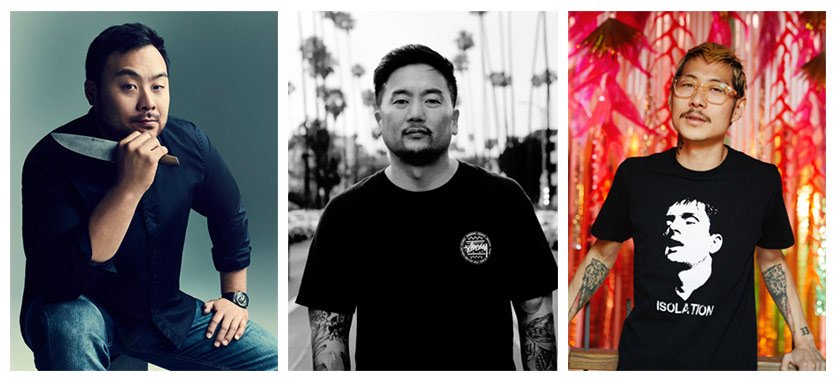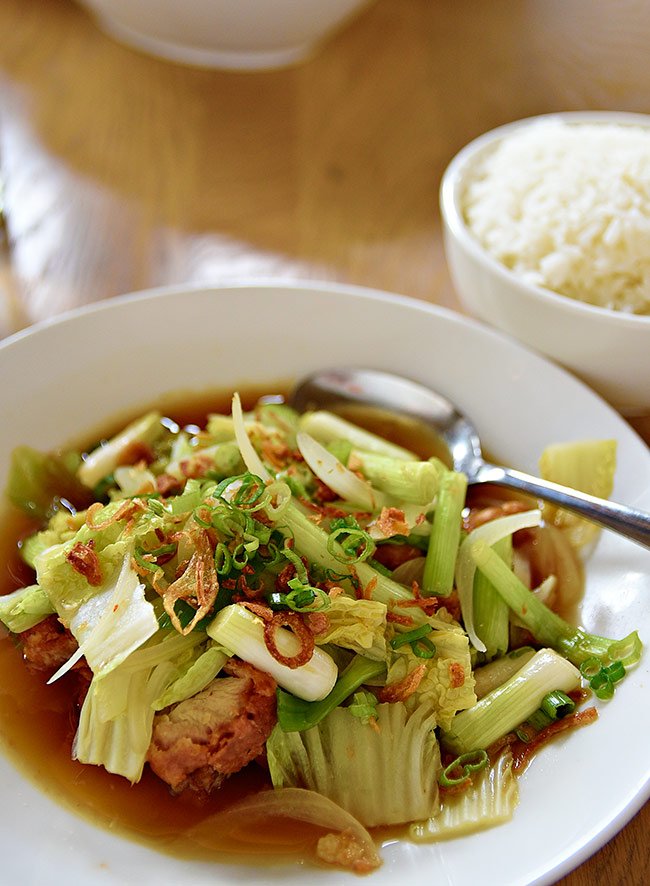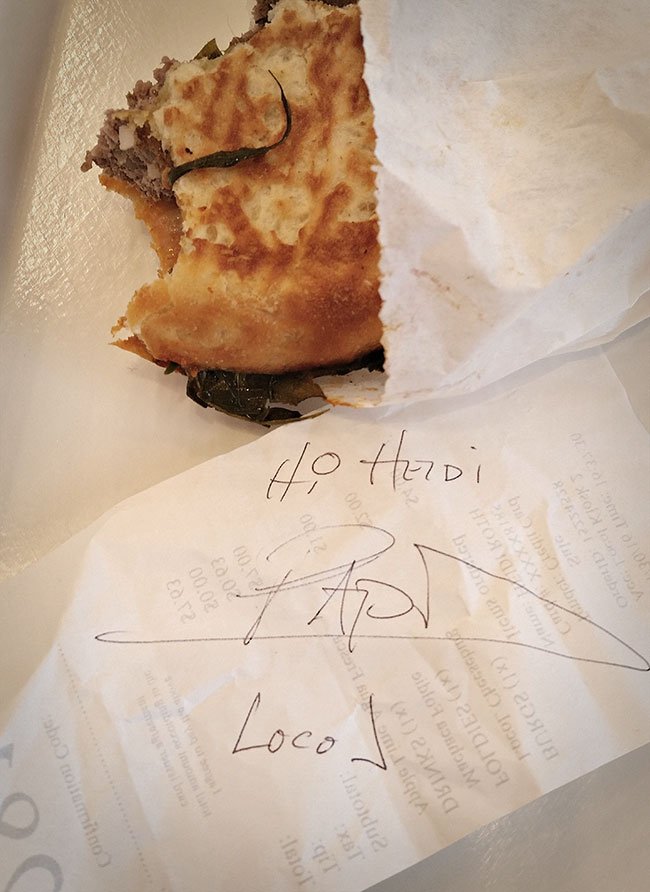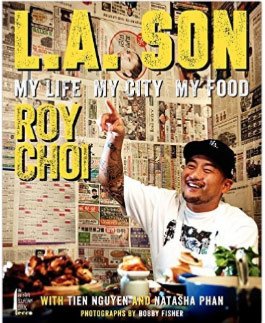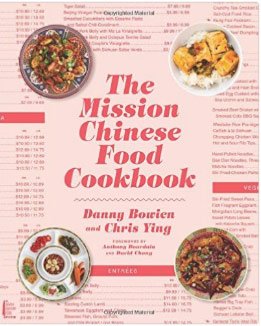The Holy Trinity
I'm munching on a cold carne asada burrito that I keep jabbing into a small, plastic condiment container filled with a fluorescent red/orange fermented chili sauce I picked up over two weeks ago at Mission Chinese Food in San Francisco. (Do not panic - it rode home from CA to AZ in a cooler filled with ice, it's currently harboring quietly in the fridge, and it's fermented, so ...) I try to dab delicately, as I only have one more of these little containers left, but it's so incredibly tasty and willpower and I don't get along well when I've got tasty fermented chili sauce in front of me.
I pick up the sauce, hold it under my nose, and inhale deeply. First comes a delicate floral note, followed by the smell of slightly briny pickles. A bit of the electric-colored sauce gets on my finger which goes immediately into my mouth. It tastes bright and slightly sweet with a medium amount of heat. My tongue feels all tingly. I've fallen in love.
I actually honestly have fallen head over heels for the Three Kings who rule the world of my comfort food: anything Asian. I'm mildly obsessed with David Chang, Roy Choi, and Danny Bowien, who I refer to, appreciatively, as ... the Holy Trinity.
The Holy Trinity: David Chang (courtesy of wired.com), Roy Choi (courtesy of thelinehotel.com) and Danny Bowien (courtesy of openingcremony.com)
While these three chefs could be considered my polar opposite — they're all three men (lady parts on board, here), Korean American (I'm so Caucasian), and classically trained (I have the worst-seasoned woks known to man) — I don't believe I identify with any professional chefs more. I'm laying it all out there now when I say that these three guys pretty much ... complete me.
What solidifies these three even more-so than their cultural heritage and love of really good Asian-inspired cuisine, are their cookbooks. Chang's Momofuku, Choi's L.A. Son, and Bowien's Mission Chinese Food are as much memoir as they are cookbooks, each one painstakingly documenting a journey that begins with an insatiable longing followed by risk-taking, mistakes, frustration and ultimately, redemption.
The Momofuku Cookbook
David Chang popped my cherry. With the ramen-craze taking over the nation in the mid-2000s, I couldn't wait for Momofuku to land in my mailbox. Anxious to discover how to make good ramen and those amazing pork belly buns, I may have jumped ahead of the 25 or so pages at the beginning of the book which chronicled Chang's history in the culinary world. But making good ramen takes time, and I eventually found myself starting from the very beginning after putting his Bacon Dashi on the stove.
Momofuku, co-written by David and Lucky Peach Editorial Director-slash-food writer Peter Meehan, documents his early obsession with ramen as he taught English in Japan after college, and the blood, sweat and tears that followed when he decided it was time to start his own noodle bar back home in New York. The book is broken down into three major sections which covers his first three NY restaurant openings, with gold-star recipes from each location.
I find all three of the Holy Trinity's cookbooks fascinating because they're all written, for the most part, chronologically, as the three chefs swing back and forth on pendulums that are half success and half failure. As David Chang and Danny Bowien's restaurant experiences progress, you see the recipes become more and more refined throughout their cookbooks. In Roy's book, his reflections growing up in the extremely diverse LA food culture are evidenced by the recipes that follow a specific period in his life. Every time I would cook one of their recipes for the first time, I felt like I was part of their process.
I say that I'm only "mildly obsessed" because if I was a true stalker of the Holy Trinity, I'd be much better at sticking out a hand and introducing myself when I happen to cross paths with one of them. And I have crossed paths with two from the Trinity: David Chang and Roy Choi.
I met Chef Chang as I was eating lunch with a friend in Momofuku CCDC last month. Visiting my friends in the nation's capital I made a point of hitting up Momofuku which had long been on my bucket list of "go here before you die" restaurants. I'd requested dinner there the night before with my friends and their family, and even though we ate family style, it was impossible to get through the entire menu in one meal.
We did our best, and I enjoyed as many of the classic dishes Momofuku is known for and that pepper the tattered and stained pages of my Momofuku cookbook (which I might have slept with once). Pork Belly, Shiitake, and Brisket Buns, Kimchi and Spicy Cucumber, Rotisserie Chicken, Bibim Guksu, Ginger Scallion Noodles, and Momofuku Ramen.
An Evening At Momofuku
So when my friend agreed to meet me downtown for lunch the next day (he is a fancy-pants lawyer who works on Pennsylvania Avenue and is as obsessed with writing about tournament bass fishing as I am writing about food and my food idols). I sheepishly asked if he wouldn't mind eating at CCDC again, for my benefit. Without hesitation he said he'd meet me there in 15, because that's what good friends do - they agree amicably that they would love a do-over at Momofuku.
We shared an order of Shrimp Buns (rounding out the entire bun menu from the previous evening), he had the Slow Roasted Pork Shoulder and I had the Braised Fried Chicken. I love chicken, and the idea of a chicken dish that was both braised and fried seemed a bit like an oxymoron - which means I wasn't surprised at all that Chef Chang attempted it. The dish was confounding and delicious, and when I researched it later, I discovered he'd been inspired by a braised chicken dish served at a now-closed Chinese restaurant from his home stomping grounds in northern Virginia.
The restaurant at lunch was obviously a bit quieter and more relaxed than the packed dinner service from the night before. As we finished up lunch and discussed whether we should be bad and share a slice of crack pie (we totally did), the back door leading to the outdoor patio swung open and David Chang strode purposefully into the restaurant, quickly ducking into the kitchen. I sat there with my mouth gaping, eyes bulging. I couldn't move. Had I really just seen David Chang? In the middle of the day? In Washington DC? My friend Pete was talking about something that I'm sure at one point I was interested in, but he trailed off as he looked at my stupefied expression.
"You just saw David Chang, didn't you?" He asked.
I nodded dumbly.
"He just went into the kitchen, didn't he?" He asked.
Again, rapid nodding from the food nerd.
"Get your camera out," he instructed. "We should take a picture."
I protested vehemently with a million reasons why I couldn't. My over-eagerness at seeing David Chang was, well, a bit embarrassing. But Pete refused to give in and when Chef Chang came out of the kitchen, he asked if he wouldn't mind having his picture taken with the shell-shocked girl sitting across the table. I'm sure David Chang had a million things to do, and a million places to be, but he stopped and took a picture with me.
I have admired David Chang for a very long time and so it meant the world that he took the time to let me express, in a small way, my appreciation of his drive to produce really great-tasting food. David Chang was the first chef I followed who's cooking and shared obsession with good-slash-bad Chinese food made sense to me. His was the first cookbook I cooked from where the food that came out of my kitchen tasted like the fantastic shit I found at authentic Chinese and Japanese restaurants on the road. His was the first ramen I ever attempted and after playing around with others is still my solid go-to. Sampling as much of the menu as I could over those two days, I came away with an even better understanding of how I needed to be cooking his food.
While David Chang joined the Holy Trinity first, I actually met Roy Choi earlier this year when I went to Los Angeles in February for the Lucky Peach Eating Out Loud event. Similarly to stalking Chef Chang, I'd been "following" Chef Choi for years as his Kogi BBQ Taco Trucks graced every online food website I poured over (during lunch of course). Well known throughout the food world as the guy who got the whole Korean Mexican Taco movement rolling, that's really just the tip of the Choi iceberg. That little bit of him we saw on the surface way back in 2008 belied the massive food movement that was cooking under the surface.
Classically trained and with years of cooking experience in four and five star establishments, Roy went out on his own with his Kogi food trucks. While he was busy introducing a whole new generation of LA to the possibility of elevated and affordable streetfood, he began opening sit-down restaurants that allowed him to showcase his love of the melting-pot cuisines found throughout LA.
Each of Roy's restaurants is unique and if you happen to own his cookbook (and you should) it's clear that while his Korean heritage is evident in his cooking, his "style" is authentically LA. Prior to meeting Chef Choi earlier this year, I'd made a point of hitting up his restaurant A-Frame when I spent time in LA with the fabulous food bloggers and photoraphers Todd and Diane of White Rice several years ago. I spent two days soaking in as much of their food photo magic as possible before stopping in at A-Frame on my way back home to Arizona.
I did what all first-timers to A-Frame should do. I ordered the beer can chicken. And then for good measure, I ordered the crab cakes because I could.
I sat at a communal table with a bunch of people I didn't know and had a marvelous time, but a girl's gotta keep a roof over her head and work was about to put out an APB on me.
Riding Shotgun with Papi at LocoL
I felt bad about only visiting ONE of Chef Choi's restaurants, so when I planned my trip to LA for the Lucky Peach event in February, several of his spots were first on my "do-not-miss" list. I had every intention of visiting Pot in the LINE hotel - the Korean hot pots, blood soups and BBQ dishes on the menu made me think this inspiration came directly from the restaurant his family opened in West Anaheim "back in the day." Commissary (also in the LINE) was next on the list, highlighting fruit and veg over meat and entertaining the concept of selective eating - being able to eat what you want as opposed to only what is available. Plus, I was hooked when I browsed through the photo gallery. Who wouldn't want to eat at Choi's rooftop backyard BBQ? Chego rounded out my February list. Roy's first brick-and-mortar, sit-down establishment after the Kogi Truck revolution, Chego is all about comfort food in the form of rice bowls (with an egg on it). I was locked and loaded.
I made it, once again, to only one spot. LocoL.
Los Angeles, which I love dearly, took one look at my restaurant list (I had 25 serious locations and five days in which to attempt to visit them all), reared back its golden head and roared with laughter. I should have known I had too much on my plate.
I made it to Cassia (a glorious place in Santa Monica that recently received a glowing review from Pete Wells in the New York Times) where I literally bumped into Gordon Ramsey as I was trying to enter and he was trying to exit (pardon, Chef). I spent one evening with Ludo Lefebvre tasting all sorts of heavenly things at Trois Mec which you can view here. My sister and I got our brunch on at Milo and Olive as well as Superba Food + Bread (key word: toast). We even blew a complete day at Disneyland which left us both pretty frazzled.
It was the traffic that did me in. The day before Eating Out Loud I limped over to LocoL in Watts, intent on at least investigating the latest of Chef Choi's endeavors to help make people better through good and affordable food. With the help of co-founder Chef Daniel Patterson, Roy's goal with LocoL is to totally revolutionize the fast food industry and prove you can make fast food using good ingredients while keeping costs low and paying workers a decent wage. They recently opened their second location in Oakland.
When I arrived back in February around 3 o'clock in the afternoon, I was expecting a long line (they'd just opened in late January), I was expecting great food, and I was expecting a bit of chaos (see: they just opened in late January). What I wasn't expecting, but got anyway, was Chef Choi working the counter.
El Guapo, Papi himself was behind the mother-freaking counter and I suddenly felt weak. I grasped desperately at my sister's sleeve to keep from melting into the floor. As we waited online to order, I tried to explain why I was freaking out. I just have so much respect for Choi and what he's doing with food to make his world a better place.
My sister tried to help me out and offered to ask him if he would take his picture with me. I thanked her, but told her if she did I would NEVER SPEAK TO HER AGAIN. I mean, the guy was BUSY. They were cranking out a ton of food to a ton of really patient people (We all knew they were working bugs out of the system. No one was complaining.). They'd probably been in the weeds since they opened that morning for breakfast and I did NOT want to bother El Guapo while he was cranking out foldies.
But my sister loves me and she knows how much all this stuff really means to me. So when he came out from behind the counter to pose for selfies of other patient, and more confident, customers (because he's kind like that), my sister asked if he wouldn't mind signing his autograph on our food receipt and making it out to her insanely bashful sister.
Thanks, Jen.
I did not have the balls to stick out my hand and thank him like a normal human being, and that one's on me. I'm working through these issues, I swear.
L.A. Son
Roy's cookbook, another amazing memoir, documents growing up as an immigrant on the streets of LA. Born in Korea, Roy Choi moved with his parents to the States in 1972 and settled in "Koreatown," a neighborhood bordered by Olympic Boulevard and Vermont Avenue. The recipes in the book are his reinterpretation of the foods memories he experienced as a child - the Twice-Cooked Duck Fat Fries are based on good times at Tommy's Burgers with his dad, the Chili Spaghetti an homage to Bob's Big Boy, but the first recipe in the book is Kimchi. "Everything I am comes from kimchi," he shares, as it should.
I found myself along for the ride with Papi, cruising the streets of LA, feeling my chest tighten as he struggled with the stereotypical bullshit someone like me (white) never had to deal with growing up, trying to fill a gaping need inside with drugs, alcohol and gambling and finally overcoming all of his addictions ... except one. "I'm addicted to feeding people," says Choi, and that one thing right there, I completely identify with.
I should have stuck out my damn hand, Papi.
This brings me back full circle to the third member of the Holy Trinity, Danny Bowien, and his electric, fermented chili sauce. When I crossed the threshold of the coveted Mission Chinese Food two weeks ago, I was pretty certain I wouldn't run into him. It was a Sunday, a holiday weekend, and I'd arrived at lunchtime. I knew my chances were slim but I still hoped I might get lucky.
I was lucky enough to get a parking spot right in front of the restaurant but that's where my luck ran out. However, I had the best Chinese food in all of San Francisco to console me.
Mission Chinese Food
My life does not afford me the luxury of eating at a restaurant three times before I offer an opinion about it. We can't all be Pete Wells, but I've learned to work around that. Order all of the dishes you want to try and pack everything up in a Yeti cooler.
I grazed on smashed cucumbers with whipped tehina and black garlic oil, I nibbled on the ginger scallion and chicken fat fried rice with cucumbers and fermented chili sauce (that mother-forking sauce!), I longed to bathe in the pork ma po tofu with Berkshire pork and Sichuan chiles (probably my favorite Chinese dish), but I stopped messing around when they brought out the country fried hamachi collar with pok pok fish sauce caramel and diakon and carrot pickles. That dish I scarfed down, picking the bones clean.
Even though this was the first time I'd stepped across the threshold of Lung Shan on Mission Street, the dishes felt familiar to me - thanks in part to Danny's cookbook, but maybe more in that I identified with his desire to learn how to cook Chinese food because he simply liked to eat it.
The Mission Chinese Food Cookbook
The third of my favorite "memoirs" is truly a diary in which Danny and his co-writer, Lucky Peach editor-in-chief Chris Ying, chronicle the life and times of Mission Chinese as it evolved from the west coast to the east.
His story is his own, but like Choi, he struggled with chemical addition early on in his life. Both Choi and Bowien were heavily influenced by Emeril Lagasse when he was heating up the television with his first cooking shows, and they both went on to train classically. Like Chang and Choi, Danny found work in fine dining unfulfilling. And while Mission Chinese would eventually blow the doors off of Chinese cooking in America, the rough starts and stops and the pain and frustration of his process make it clear that Danny has earned the right to be called one of the best Chinese food cooks ever. Period.
None of my Holy Trinity cookbooks include "authentic" recipes, and Mission Chinese is no exception. This is a good thing. We all want Hainan chicken rice because it's amazing, but you really have to know what you're doing for it to turn out right. So cut yourself some slack and make Fried Chicken Hainan Rice instead. And who wouldn't want to eat Kung Pao Pastrami?
Danny's recipes are not quick and easy (life lesson: nothing good EVER is!), but they are doable if you have a bit of patience and forethought. My favorites are in the book: Ma Po Tofu, the blazing hot Chongqing Chicken Wings, and those smashed cucumbers with whipped tehina. And then he totally messes with me by sticking in a recipe for Ma Po Ramen.
Meet Me at Starlite
And this is where I leave you - ever so slightly unfulfilled in that I haven't actually met Danny. Yet. I'd like to think I can quickly remedy that by inviting all three from my Holy Trinity to meet me at the Starlite. It's the tiny hole-in-the-wall Chinese restaurant in my little one-horse town that made me fall in love with Chinese food. I grew up looking forward to the Paradise Dinner for four with my family on the weekends. This is old-school Americanized Chinese food, folks. Red faux-leather booths and big round tables with the cool lazy susan perched on top. Laminated posters featuring far-off Sichuan dynasties and beautiful Chinese models holding bottles of Tsing Tao beer taped here and there on the walls. It's super close to the Lung Shan experience ... minus the Chinese dragon and the bangin' food.
Gentlemen, it would be an honor to have you. I'll order the Paradise Dinner for us: chicken chow mein with crispy noodles (that come from a can), fried shrimp and crispy chicken eggrolls dunked in fluorescent pink sweet and sour sauce, egg foo young doused with a lumpy brown gravy, sweet and sour pork in an unnatural shade of magenta, and of course – fried rice.
I'll order more than we can eat, because it's even better the next day, cold and congealed, straight out of the fridge.


